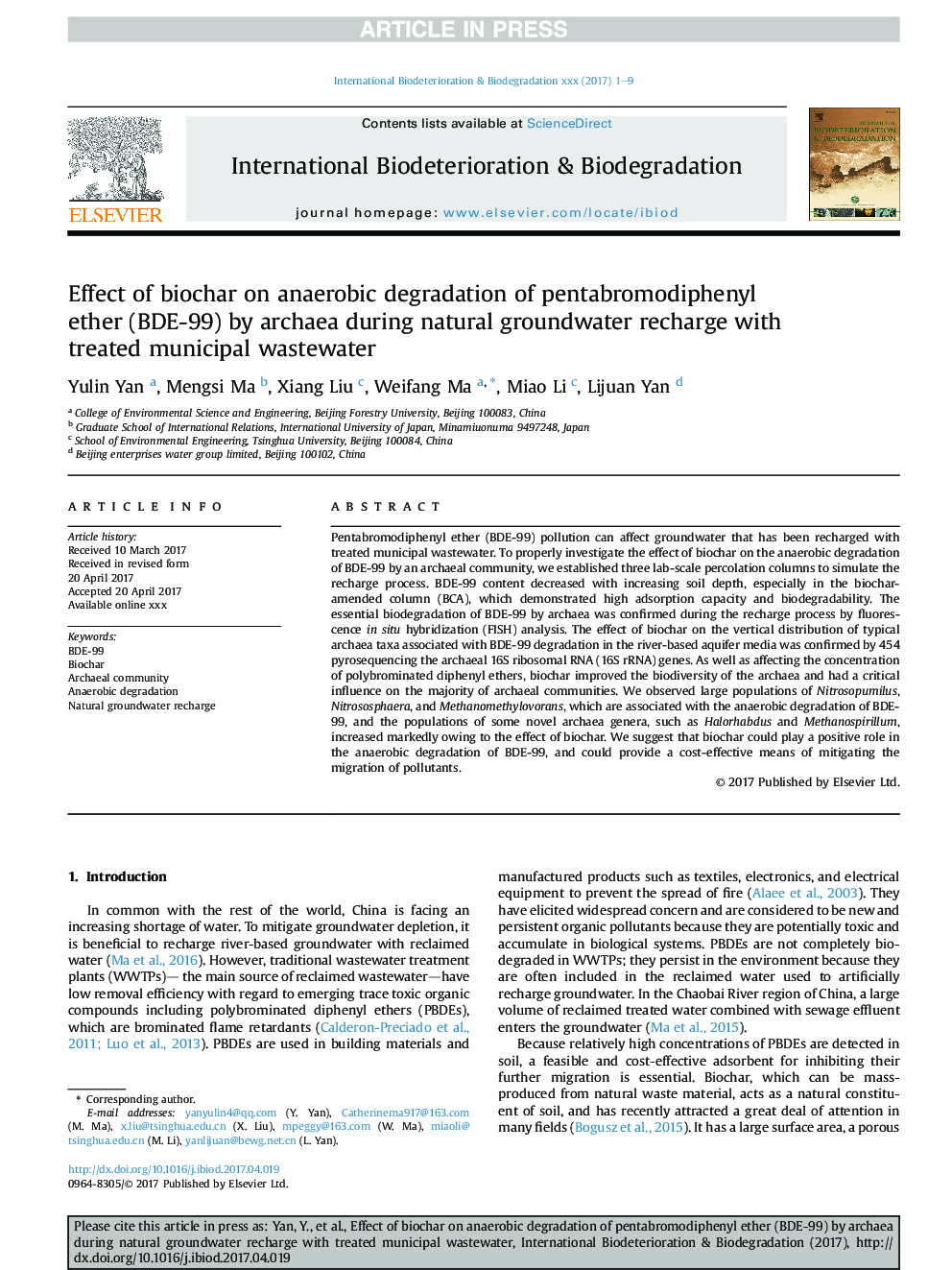| Article ID | Journal | Published Year | Pages | File Type |
|---|---|---|---|---|
| 5740327 | International Biodeterioration & Biodegradation | 2017 | 9 Pages |
Abstract
Pentabromodiphenyl ether (BDE-99) pollution can affect groundwater that has been recharged with treated municipal wastewater. To properly investigate the effect of biochar on the anaerobic degradation of BDE-99 by an archaeal community, we established three lab-scale percolation columns to simulate the recharge process. BDE-99 content decreased with increasing soil depth, especially in the biochar-amended column (BCA), which demonstrated high adsorption capacity and biodegradability. The essential biodegradation of BDE-99 by archaea was confirmed during the recharge process by fluorescence in situ hybridization (FISH) analysis. The effect of biochar on the vertical distribution of typical archaea taxa associated with BDE-99 degradation in the river-based aquifer media was confirmed by 454 pyrosequencing the archaeal 16S ribosomal RNA (16S rRNA) genes. As well as affecting the concentration of polybrominated diphenyl ethers, biochar improved the biodiversity of the archaea and had a critical influence on the majority of archaeal communities. We observed large populations of Nitrosopumilus, Nitrososphaera, and Methanomethylovorans, which are associated with the anaerobic degradation of BDE-99, and the populations of some novel archaea genera, such as Halorhabdus and Methanospirillum, increased markedly owing to the effect of biochar. We suggest that biochar could play a positive role in the anaerobic degradation of BDE-99, and could provide a cost-effective means of mitigating the migration of pollutants.
Related Topics
Life Sciences
Environmental Science
Environmental Science (General)
Authors
Yulin Yan, Mengsi Ma, Xiang Liu, Weifang Ma, Miao Li, Lijuan Yan,
